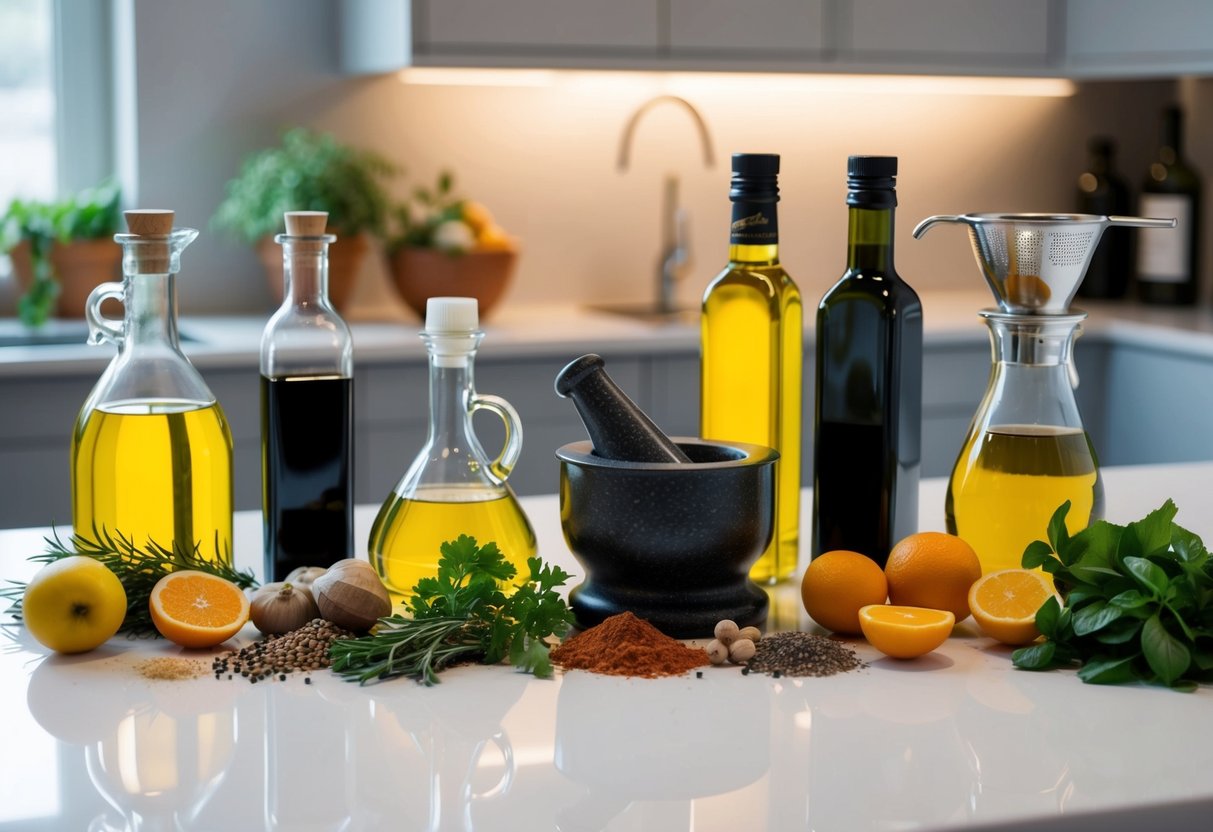How to Create Flavorful Infusions: Tips for Infusing Oils and Vinegars
Picking Flavoring Agents: Herbs, Spices, and Vegetables
Flavoring agents contribute significantly to the final taste. Garlic, for example, is a strong flavor enhancer, while rosemary offers a pine-like aroma. Basil and oregano introduce an earthy scent and taste, complemented by the warmth of thyme.
When using herbs, fresh varieties often impart stronger flavors than dried options. Lemon thyme and lavender can provide lighter, floral notes. Including vegetables adds depth; for instance, onions and chili peppers can deliver sweetness and heat. It’s vital to blend and match these agents to craft a well-rounded infusion.
Safety Considerations

When infusing oils and vinegars, attention to safety is paramount. This includes measures to prevent contamination and botulism, along with proper storage methods to ensure the longevity and safety of the infused products.
Preventing Contamination and Botulism
Botulism is a serious concern when infusing oils, particularly with ingredients like garlic. To minimize risks, it is essential to use ingredients that are thoroughly washed and dried. Acidified garlic can be used as it contains citric acid, which helps inhibit bacterial growth. Preparing oils with low-moisture ingredients reduces contamination risks.
Understanding acidity levels in infusions is crucial. When making vinegars, maintaining a pH level below 4.6 helps prevent bacterial growth. For added safety, users can sterilize containers and utensils before use. Infusing oils at temperatures above 185°F for at least five minutes can help reduce the risk of pathogens. Keeping surfaces clean and using quality ingredients also plays a vital role in safety.
Proper Storage Methods
Storing infused oils and vinegars properly maintains safety and flavor. After preparation, oils should be kept in a refrigerator and consumed within two weeks. Vinegars can generally be stored at room temperature in a cool, dark place, with airtight lids to preserve potency and prevent oxidation.
For extra assurance, consider adding citric acid to infusions, as it extends shelf life by inhibiting microbial growth. Labels indicating preparation dates and key ingredients can keep track of freshness. Using dark glass bottles helps protect contents from light and maintain flavor. Regularly checking for signs of spoilage guarantees only safe, fresh products are consumed.
Preparation Techniques
Creating flavorful infusions involves careful preparation of ingredients and choosing the right infusion method. Proper cleaning ensures safety and enhances flavor, while understanding the differences between cold and heat infusion helps achieve the desired outcome.
Cleaning and Preparing Ingredients
Cleaning ingredients is crucial. Start by thoroughly washing fresh herbs and fresh garlic. Dirt and bacteria can affect both flavor and safety. Remove any wilted or damaged leaves from herbs. Fresh garlic should be peeled to make sure no dirt remains.
After cleaning, herbs can be chopped to increase surface area, which improves infusion. An acid solution, like a mix of vinegar and water, can be used to further ensure ingredients are sanitized. This is especially important for garlic due to the risk of botulism. Properly preparing ingredients lays the foundation for successful infusion.



